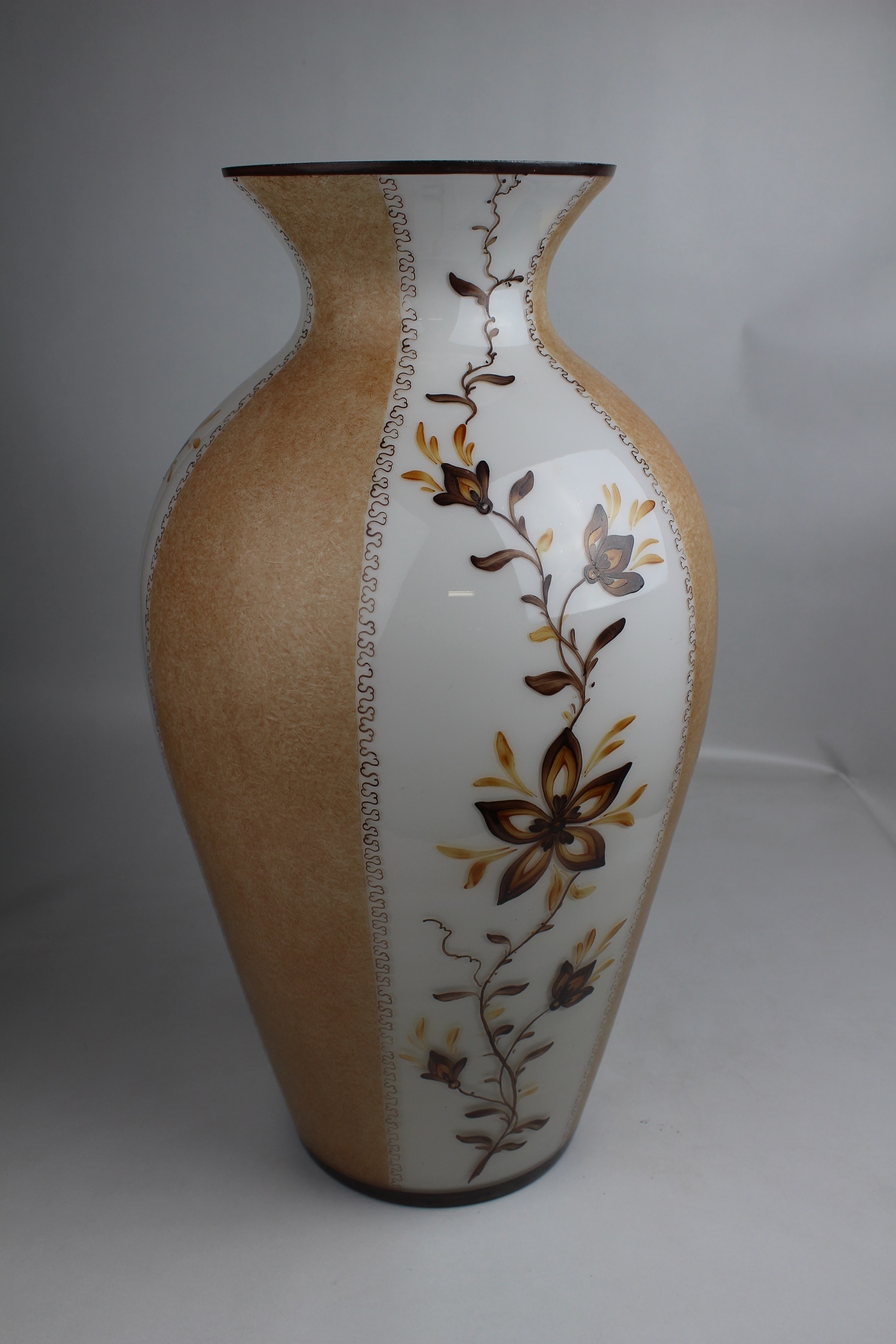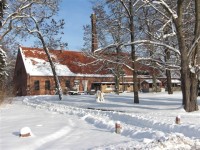Standvase mit Milchglasinnenfang, mundgeblasen und handbemalt. Drei Felder mit in bräunlichen Tönen gehaltenen Blumenmotiven und drei Felder mit einer opaken Tupfendekoration, geteilt durch vertikale Banddekore. Die Vase wurde vermutlich von Glasmalermeister Willi Brisch in Glashütte hergestellt. Die Standvase erzählt deutsche Zeitgeschichte. Am Standort der Baruther Glashütte hatte die Glamalerei bis 1945. Erst durch die Vertreibung von Glasmalern aus dem Sudetenland gelangte diese Form der Kaltveredelung nach Glashütte. Glasmalermeister Willi Brisch unterhielt hier bis etwa 1950 eine kleine Glasmalerei und bildete auch Lehrlinge aus. Die Vase soll als Geschenk an den Schleifermeister Erich Linke überreicht worden sein, der beim 1.-Mai-Kegeln den ersten Preis errungen hatte. Als Linke nach seiner Verrentung nach Reutlingen umzog, sagte er zu seinen Glashütter Verwandten: "Die Vase bleibt bei Euch."
en

